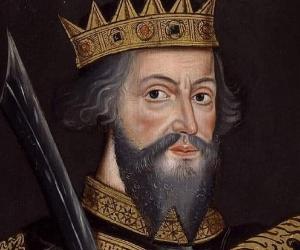
The Duke of Normandy, William the Conqueror, later became King of England. He was crowned Duke in 1035 and rose through the ranks to become France's most powerful nobleman, eventually seizing the English throne in 1066. William was an illegitimate child of Robert I, Duke of Normandy, who died unexpectedly while returning from a pilgrimage, and thus inherited his father's throne at the age of eight. The feudal barons fought for control of his fragile dukedom during his early reign, but William survived and grew up to become a great warrior, crushing the rebels and restoring his kingdom. Following that, childless King Edward the Confessor promised William succession to the English throne, but when Edward died, one of Edward's relatives succeeded him as King. Unsurprisingly, William felt betrayed and launched an attack on England, known as the Battle of Hastings. William was crowned King after successfully capturing the English throne and ruled England for 21 years (1066-1087) until his death. This conquest altered the course of English history, transforming nearly every aspect of the country and establishing England as the most powerful nation in Europe. William, one of the most important figures in medieval English history, had a profound impact on both Normandy and England.


